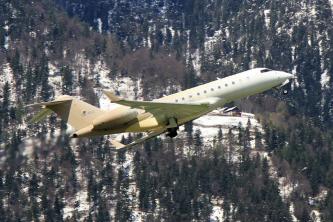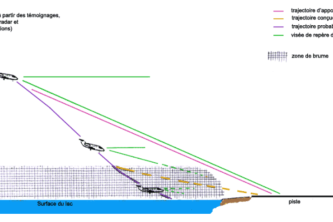
As professional pilots, we become so well practiced at flying to airports we’ve never seen before it becomes almost second nature. We know what questions to ask: Is the runway long enough and will it support the weight of our aircraft? What instrument approaches are available? Are there any obstacle considerations? What local support is available?
The questions go on, but we know most of the answers are available from any computer with an internet connection or, sometimes, by way of a quick phone call.
But is it that easy for all airports? There are some destinations that require more than what our usual planning requires because we don’t even know the right questions to ask.
What Does Ac-U-Kwik Have About the Destination?

Final approach to Queenstown Airport, New Zealand Credit: Phillip Capper
Like many pilots, my starting point is www.acukwik.com, where I get the usual airport and FBO information.
But I go beyond that by digging further into the various provided links. Going to Queenstown Airport (NZQN), New Zealand, for example, you might have heard the approaches require a dive over mountains from all quadrants.
Ac-U-Kwik provided links to the airport’s FBOs and one of those led to this gem: https://aircenterone.co.nz/services/flight-videos/, with videos of the approaches.
For obstacle analysis, a photo might be worth a thousand words, but a video would be worth a thousand photos. The AirCenter One website also promised a briefing packet with an email request; the provided information was invaluable.
Is Destination-Specific Training Required?

A Global 5000 departs Innsbruck Credit: Rob Hodgkins
We know some destinations are going to be a special challenge just because their names evoke visceral images of tall mountains and deep valleys.
When we were first scheduled into Innsbruck Airport (LOWI), Austria, we suspected we wouldn’t be allowed to go without special training. A quick look at www.acukwik.com confirmed our suspicions. We sent our two scheduled pilots and a backup pilot to the Innsbruck training course offered by FlightSafety International. The ground school and simulator sessions were invaluable.
Approach and missed approach procedures are not intuitive and the best way to learn about this airport is to fly everything in day, visual meteorological conditions. The synthetic view of the towering mountains was excellent preparation for the real thing.
Does the Destination Have an Accident History?

Credit: Gulfstream GIII-VP -- BLN's trajectory short of Chambery Airport (LFLB), France
I think many airports have insidious challenges that have claimed unsuspecting pilots before and lay in wait to do it again.
The Flight Safety Foundation has an excellent database for researching aviation accidents at www.aviation-safety.net. Selecting Database, ASN Accident Database and Airport will make short work of your search. Looking for Chambéry Airport (LFLB), France, for example, returns four accidents. The 1998 crash of a Gulfstream GIII reveals that mist over the Lake of le Bourget can result in the loss of visual references, so it is critical to remain on the ILS even if you think you have the runway in sight well before minimums.
Further research revealed the ILS glidepath is 4.46 deg., just shy of the 4.5-deg. limit for many aircraft. While a practice run in a simulator isn’t required by the airport, it proved a useful precaution. The approach requires you to configure early, stay on speed and glidepath, and resist the temptation to fly visually too early.
What Are the Threats?

Ops.group alerts from Warsaw on a particular day in August.
Some airports don’t have mountains to worry about, but threats of other kinds abound.
My favorite source of timely and critical flight information comes from https://ops.group. A membership is required, but there is no better source of vital intelligence.
I recently planned a trip from Warsaw Chopin Airport (EPWA), Poland, to Ben Gurion Airport (LLBG), Israel, and discovered a few things I didn’t know to add to the obvious war threats I did know of. Besides the war in Ukraine, I learned that many operators are also avoiding the airspace over Belarus, there are reports of GPS jamming over Romania, there are bomb threats at several Moldova airports, Syria is an active conflict zone, there are missile threats in Damascus, and there have been rockets fired into Israel earlier in the month. Many of these threats are absent from Notice to Airmen (NOTAMs) or are published well after the threat has begun.
Besides the war threats, ops.group also tells us about mandatory permits needed in Poland and Israel, as well as overflight permits for many of the countries between our departure and destination, and permits for landing at many of our possible alternates. If you fly internationally, there is no substitute for ops.group. Its subscriber base includes hundreds of airlines and thousands of other operators, which provide the best intel of all.
For example, I have been a frequent visitor to Paris Le Bourget (LFPB), France. I once discovered through ops.group that the airport was closed every night for a week, something the NOTAMs didn’t know until a few days after the closures started. Subscriptions to ops.group run $35/month for an individual or $10/person/month for a team plan. It is money well spent.
In Part 2, we’ll discuss using social media contacts to get more information about your new destination.





